

Display No. 10K
ALLEN, Lewis
Lewis Allen joined the Royal Navy when he was fifteen years old in 1923. He completed his training in HMS Ganges and was then sent to HMS Resolution as a Boy 1st Class. Allen spent the next 18 months serving in HMS Emperor of India stationed with the Mediterranean Fleet. He then joined the aircraft carrier HMS Eagle also with the Mediterranean Fleet where he remained until September 1926. Allen served for the next thirteen years in HM Ships Curlew, Delhi, Frobisher, Sandhurst, Sussex and Endeavour. He was discharged from the Royal Navy in August 1939 as his term of engagement had expired.
Allen joined the Royal New Zealand Navy in 1942 and served for the remainder of the Second World War. He was posted to the armed merchant cruiser HMNZS Monowai. Allen was part of the crew that took Monowai to Britain to be converted into a Landing Assault Ship. In September 1943 Allen joined HMNZS Gambia and was a member of the commissioning crew. He served in Gambia for the rest of the war in the Indian Ocean, North Pacific, and off Japan. He was serving in Gambia at the time of the Japanese surrender.
Awarded medal(s)
Medal Description [Left to Right]:
The Naval General Service Medal 1915-1962
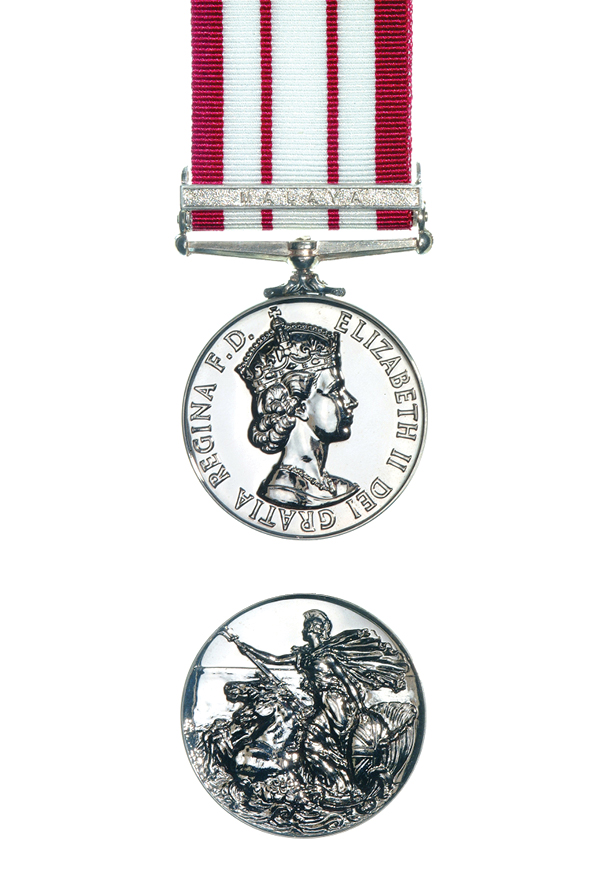
The Naval General Service Medal (NGSM) 1915-1962, was instituted in 1915 to recognise service in minor naval operations for which no separate medal was intended. They were always issued with a clasp for the specific area of operation. A total of seventeen clasps were awarded. Examples in our collection include the ‘Persian Gulf 1909-14’ clasp for operations against gun-runners; the ‘Palestine 1936-39’ and ‘Palestine 1945-48’ clasps which were issued for service in the pre-war Arab uprising and post-war Jewish insurgency; the ‘Minesweeping 1945-51’ clasp which was awarded for six months minesweeping service afloat; the ‘Malaya’ clasp recognising the service of naval personnel, including the Royal New Zealand Navy, during the Malayan Emergency of 1948-1960; and the ‘Yangtze 1949’ clasp for those on HMS Amethyst and other vessels attacked by Communist Chinese forces.
The 1939-1945 Star
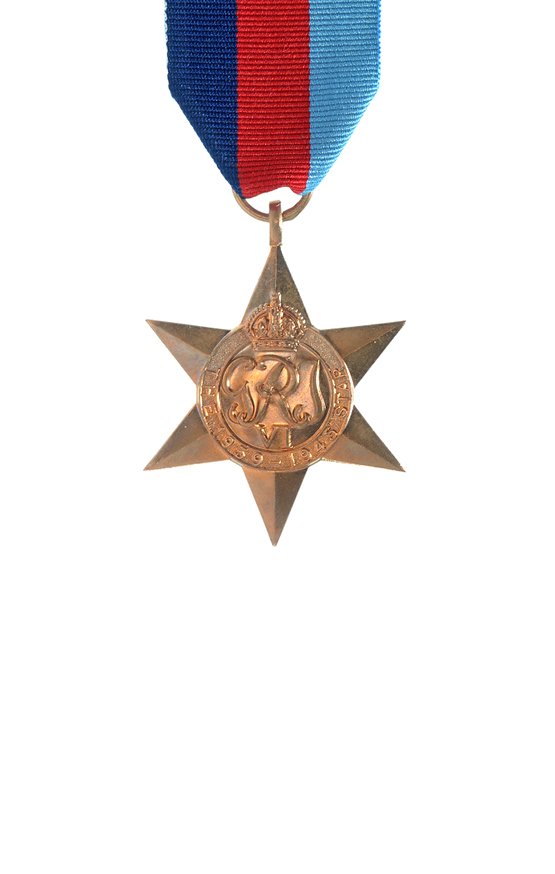
The 1939-45 Star is the first in a series of eight campaign stars instituted in 1945 to recognise service in World War Two. The ribbon has three equal vertical stripes of dark blue, red and light blue. The dark blue stripe symbolises the service of the Navy and the Merchant Navy, the red stripe symbolises the service of the Army, and the light blue stripe symbolises the service of the Air Force. The equal width bands represent the equal contributions of the three service arms towards victory. The ribbon was devised by King George VI. Two clasps could be awarded with this medal: ‘Battle of Britain’ and ‘Bomber Command’. Only aircrew would qualify for these clasps although a small number of Fleet Air Arm naval pilots flew for the air force and would be eligible for the ‘Battle of Britain’ clasp.
The Burma Star
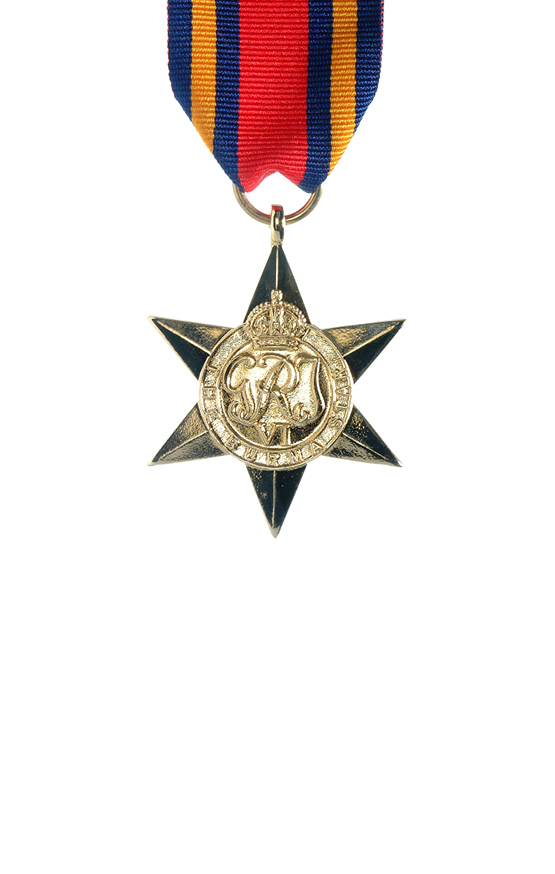
The Burma Star was awarded for service in the Second World War in the Burma campaign, from 11 December 1941 to 2 September 1945. The centre of the ribbon is red (representing the Commonwealth forces) with outer stripes of dark blue (representing the British forces). The dark blue bands each have at their centres a stripe of bright orange (symbolising the sun). A ‘Pacific’ clasp could be awarded with this medal. Personnel qualifying for both the Pacific and Burma Stars were awarded the first star but only a clasp in respect of the second.
The War Medal 1939-1945
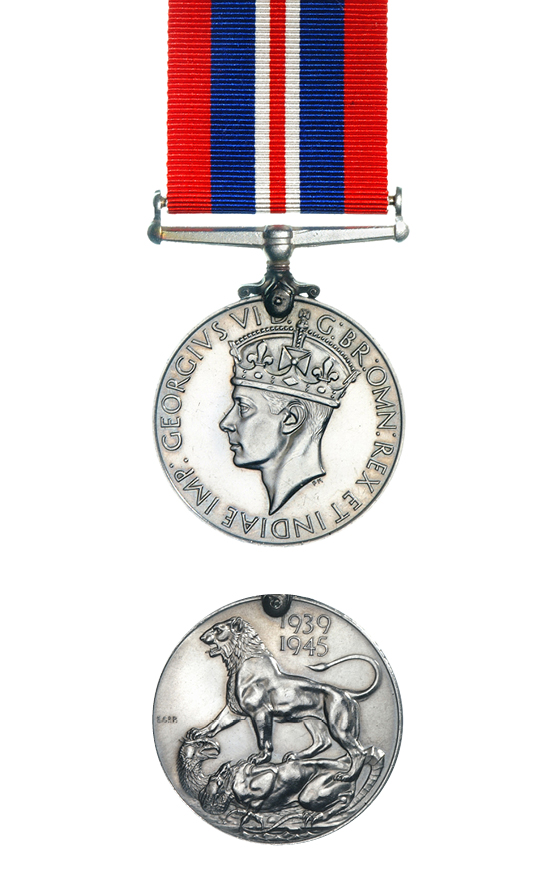
The War Medal 1939-45 was awarded across the British Commonwealth to all full-time members of the Armed Forces in the Second World War for 28 days service between 3 September 1939 and 2 September 1945, irrespective of where they were serving. The ribbon is the red, white, and blue of the (British) Union Flag. There is a narrow central red stripe with a narrow white stripe on either side. There are broad red stripes at either edge, the two intervening stripes being blue.
A bronze oak leaf on the medal ribbon denotes that the recipient was Mentioned in Despatches. To be Mentioned in Despatches a member of the armed forces had their name mentioned in an official report, written by a superior officer, and sent to a higher command. The report would describe the individual’s gallant or meritorious action in the face of the enemy.
The New Zealand War Service Medal
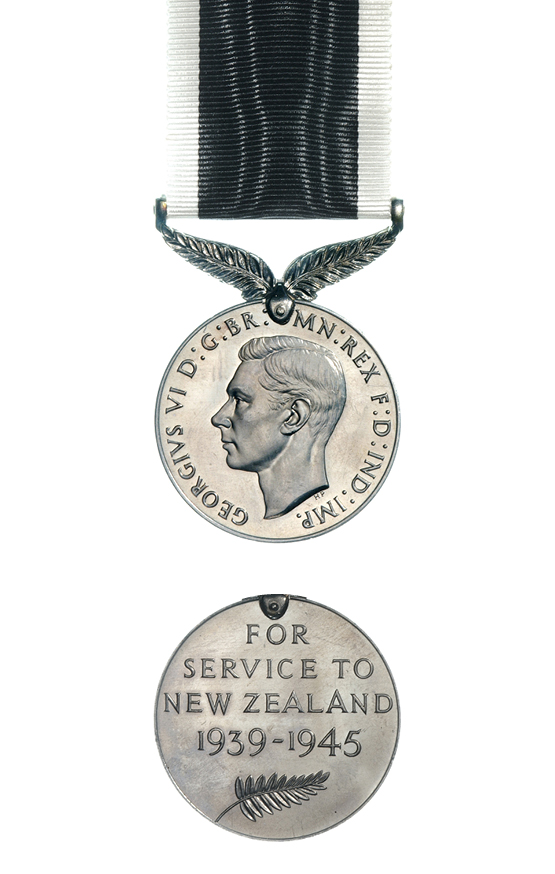
The New Zealand War Service Medal was awarded for 28 days’ full time service or six months’ part time service in the Second World War in any of the New Zealand Armed Forces including the Reserves, Naval Auxiliary Patrol Service, or Home Guard, between 3 September 1939 and 2 September 1945.

